Buried treasure: The lasting value of '90s sports apparel
When you think of 1990s sports memorabilia, there's probably one image burned deep into your subconscious: the Starter jacket. Think a little longer and you'll probably remember a snapback with a splash logo or maybe even a ceramic mug stamped with a faded team crest. There's a reason why so many symbols of '90s sports marketing are easily identifiable - the era was iconic.
For some people, memorabilia from the '90s is about more than looking in a time capsule - it's a pay day. The hunt for these relics is part nostalgia trip, part treasure hunt, and all the proof you need that the loud, logo-heavy style of '90s sportswear and accessories has stood the test of time.
"I go out hunting for stuff, or I'll look online and I strike out a lot of time. But when I actually, finally, turn over a box, or dig through a pile of stuff and find something, there's no better feeling in the world," said collector Casey Pitocchelli, who owns Rare Vntg, an online store devoted to nostalgic sportswear.
While not everything from the era holds value - Beanie Babies are a prime example of a huge fad that flopped - the '90s were a turning point for apparel like the '80s were for shoes. It's the era when sports merchandising became something more than just fan gear, and fans are still willing to pay big dollars for a piece of it.
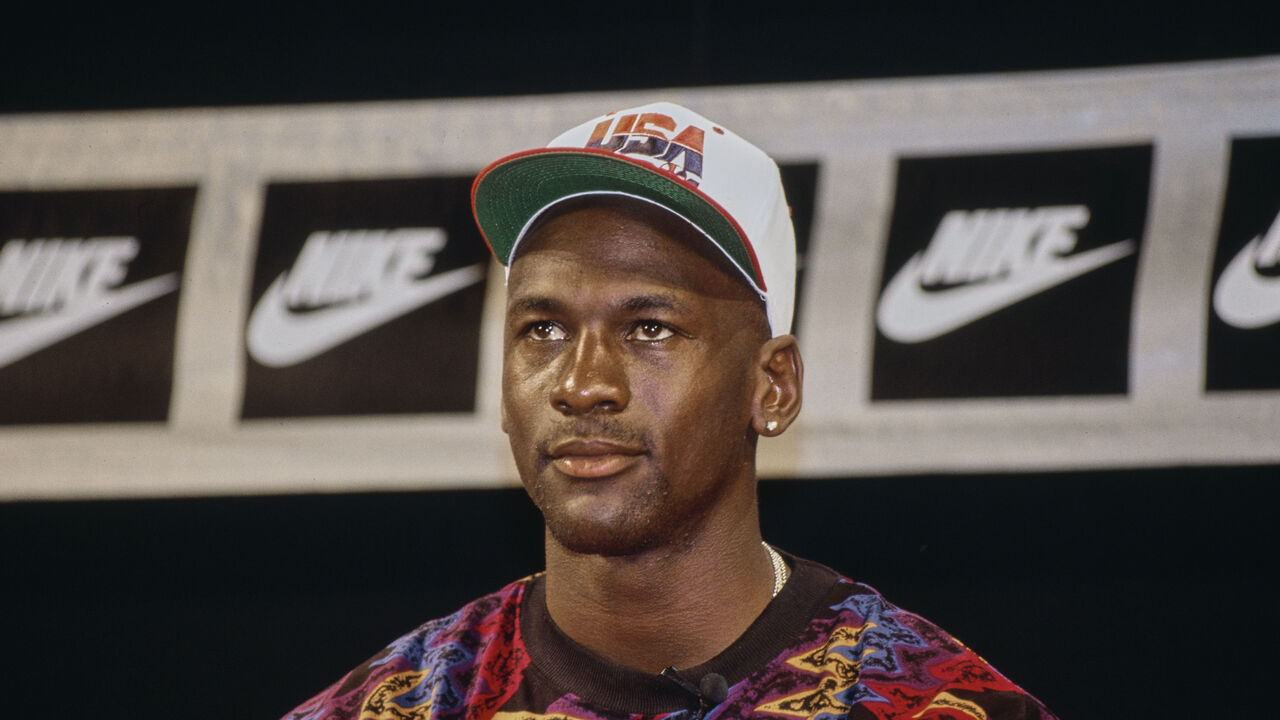
The era that changed everything
Part of what makes '90s sports merchandise sought after is the tipping point the decade marked - it's when leagues opened the floodgates to licensing.
"Between '88 and '93 - that was considered the boom. That's when the market exploded," said sports memorabilia appraiser Todd Sawatzky. "A lot of people had licensing. It opened up more revenue streams."
Starter jackets entered the chat and brands like Mitchell & Ness and Logo Athletic became popular for apparel with massive team logos, bold colors, and oversized fits. Suddenly, a jersey or splash hat wasn't just something to wear to a game - it was part of an identity.
"The stuff from the mid-to-late '80s through to 1999 let's say - they'll never go away," Pitocchelli said. "That's just because so many teams established their identities then, and some of the pieces they made are just special."
This was the decade where even smaller markets felt massive. Teams like the NBA's Charlotte Hornets or the NHL's San Jose Sharks got the full branding treatment - and so did minor-league teams, whose branding later became iconic. For kids who grew up on that, the designs never truly left them.
"The Hershey Bears - a minor-league team - a hat of theirs sold for more than $700. Sometimes it's the short prints from small areas where people want that super niche design and team," Pitocchelli said.
The quality from that era is part of the modern appeal, too. "They're made well," Pitocchelli said of '90s oversized sweatshirts. "They're made so much better than anything you can buy right now."
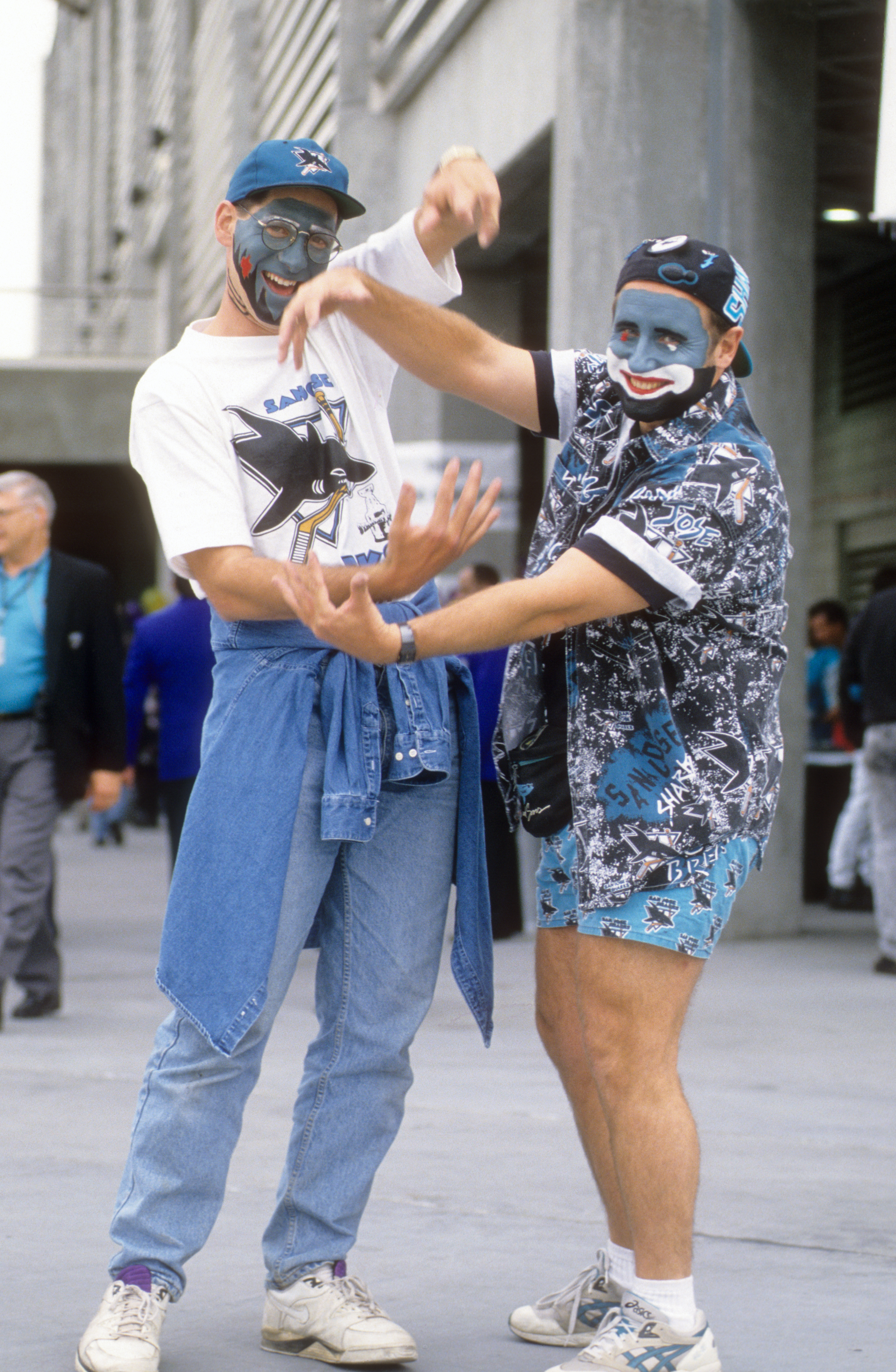
What's actually valuable?
Starter jackets - especially those tied to cult-favorite teams like the Hornets or Raiders - are the crown jewel. They can fetch anywhere from $150 to more than $500 depending on the condition, team, and style.
"It's always been the Starter jacket - the pullover one with the poncho, and late '80s, early '90s satin version that all the old hip-hop artists used to wear," Pitocchelli said.
Snapback hats from the '90s are also valuable - especially rare ones tied to defunct teams or minor-league clubs. Styles like the splash, D cut, and sharktooth are collector gold.
"I just saw a hat sell for $1,600. It was an old Philadelphia Phantoms minor-league hockey team. There was a Logo Athletic design. It's really popular," Pitocchelli said.
Vintage T-shirts and sweatshirts - especially all-over prints with big, loud graphics - also do well in the resale market. And don't overlook the quirky stuff. The '90s were a weird and wonderful time for licensing, and that extended far beyond clothing.
"There's ceramic mugs, and the heavier, German-style steins that can fetch in $50 to $60," Sawatzky said. Licensed glassware and barware can still sell, especially if tied to popular teams.
While sports cards from the '90s were largely overproduced and have minimal value today, there are still a few gems - if you know what to look for. "Every now and then, there was something like a really super-short print," Sawatzky said. "In hockey, in the first year of Pro Set, there was a Stanley Cup hologram card. That retails in the several hundred. They were also prone to doing a lot of error cards, and corrections. In hockey, there's a Paul Gillis card - the very first run showed him with a bloody nose. That card has a pretty good resale on it."
Still, Sawatzky warned that many '90s cards are unlikely to bring in big money unless they're from rare sets or have a specific story behind them. Beanie Babies, too, are largely a bust - unless you've got one of the few that survived the bubble with some value intact. "There are sport Beanie Babies - I have one with Gretzky's number. They did all sorts of different players - hockey, baseball, basketball," Sawatzky said. "But the big one is still the Princess Diana Beanie Baby."
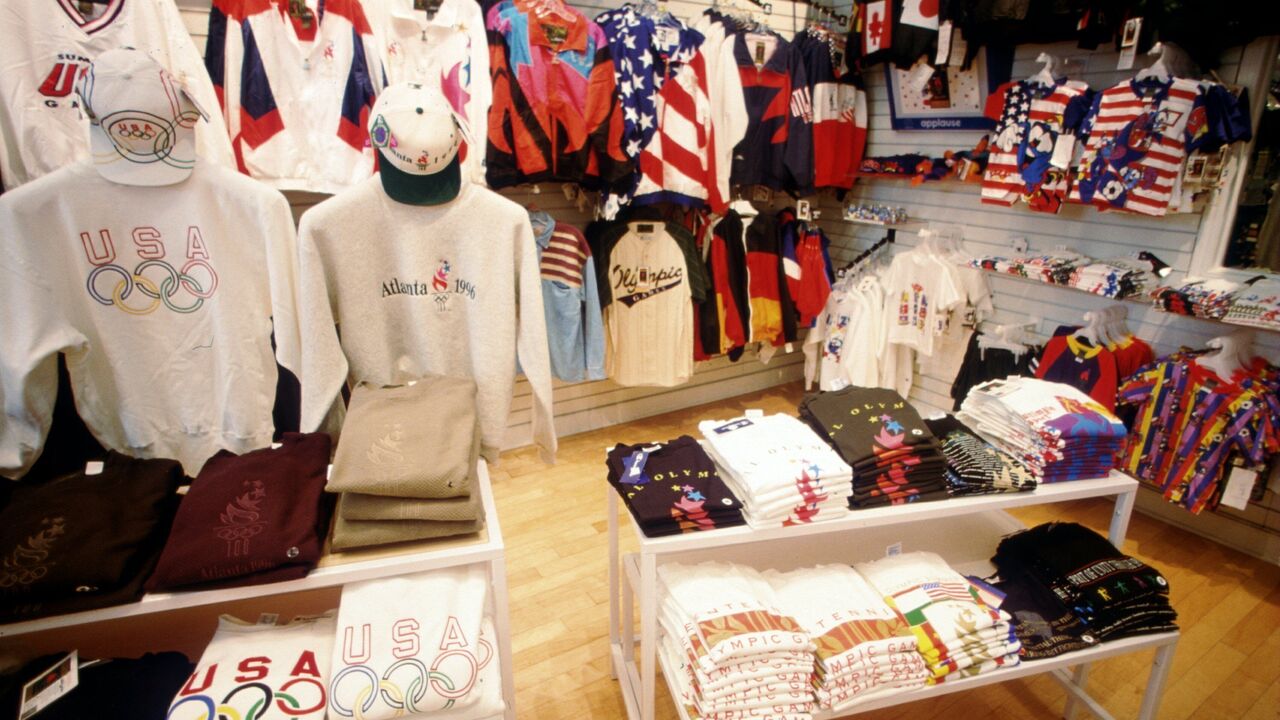
Not always about the money
Justin Higgs grew up in Northern California in the '90s surrounded by 49ers jerseys and Joe Montana posters, but he only had eyes for the Buffalo Bills. The team went to four straight Super Bowls from 1990-93, and even from across the country, he was hooked.
"I was always hunting and trying to get my parents to buy me Bills clothing," he said. "But as you can imagine, before the internet it wasn't plentiful in Northern California."
It was about more than just repping a team. It was about being an individual. Higgs runs a popular '90s memorabilia Instagram account showcasing vintage finds and his individualism still shows up in the way he collects today.
"For me, it's always defunct teams that catch my attention. It's teams that no longer exist, that just aren't around anymore. The Montreal Expos, the Quebec Nordiques, the Seattle SuperSonics, the Houston Oilers - teams like that. That stuff is just timeless. The demand for that never goes away. It's more than regional. People have an affinity for stuff that no longer exists," Higgs said.
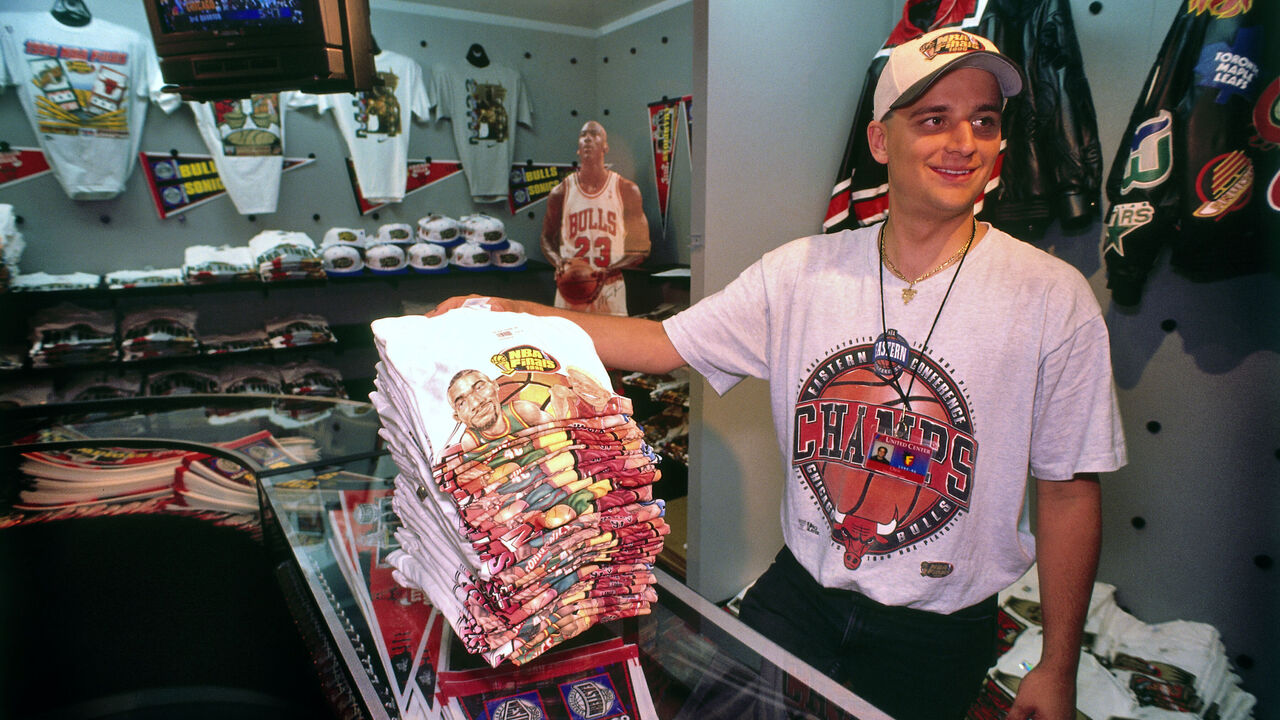
The same logic applies to the win-loss columns of '90s era teams. Squads that had major championship runs in the '90s typically have more merch that survived, but teams that weren't good in that era produced less, making their merchandise more treasured now. Finding the jersey of an obscure player is even more coveted. "I love to find the more obscure players. If you're wearing that jersey to a game, you don't really care about 20 people coming up to you and saying it's an awesome jersey. You're just looking for that one person to come up to you and say, 'Oh my God, that jersey. I loved that player for the one year he played.'"
For Higgs, finding a niche piece of sportswear from his past is about more than the potential resale value - it's about the special connection to his childhood memories. That same emotional pull is what most interests Pitocchelli, too. Prior to the Philadelphia Eagles' 2023 Super Bowl appearance, he was browsing Facebook Marketplace for something unique to wear when something caught his eye: a vintage Eagles jersey, cut short the way his dad used to modify his jerseys to play rec. football. Upon closer examination, he realized it was his dad's old jersey.
"I told the seller I'd pay whatever she wanted for it. It's priceless to me," Pitocchelli said.
His grandmother tailored it. The jersey traveled through strangers' hands only to find its way back to their family. "I gave it to my sister and it was pretty emotional," Pitocchelli said.
Global craze
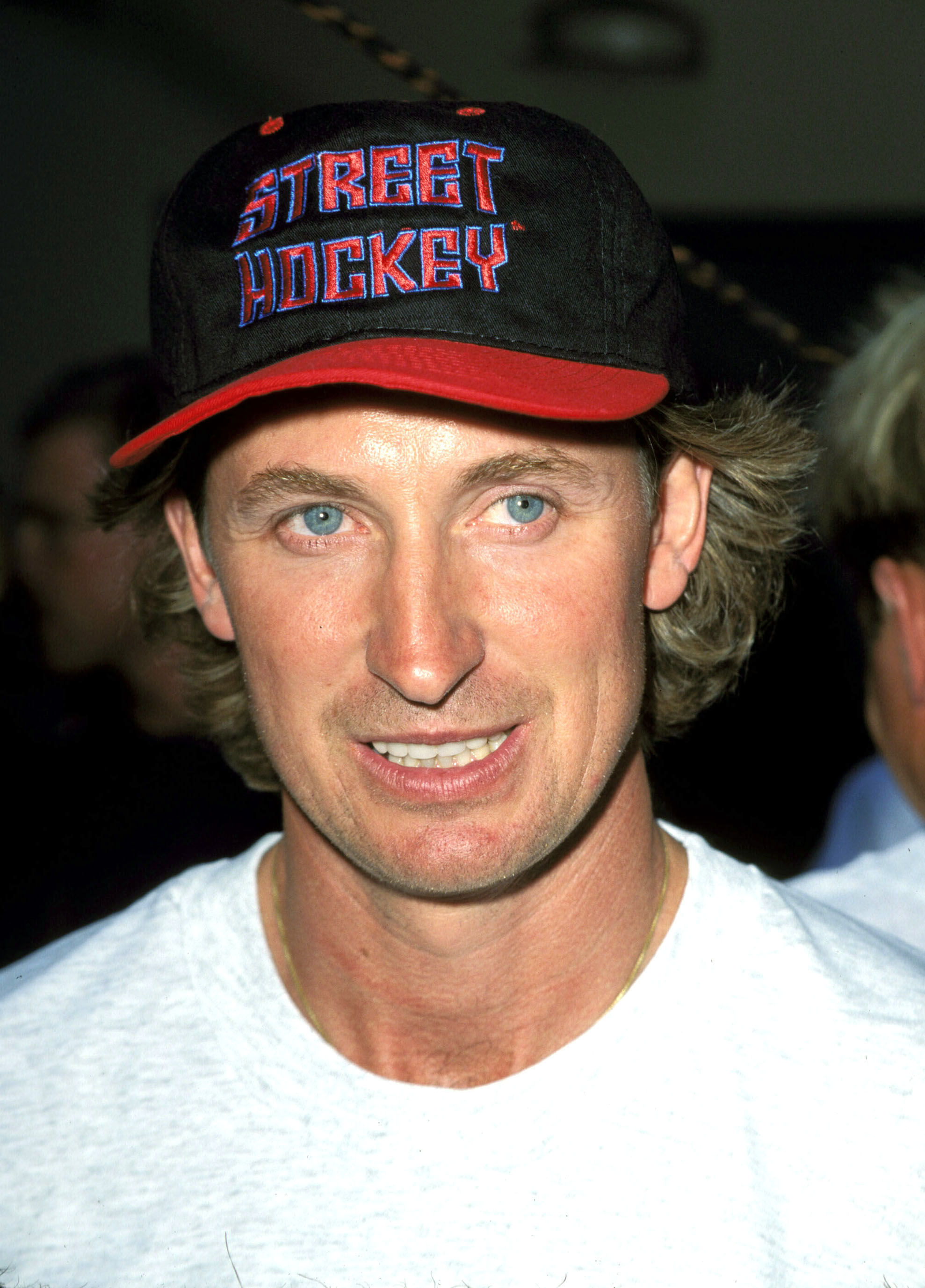
The demand for '90s sports gear isn't just a North American phenomenon. In some cases, the interest overseas is even more intense than on home soil.
"Hats are big internationally," Pitocchelli said. "In the Philippines, Australia, there's a lot in New Zealand, too. They love corduroy hats there for some reason." In those regions, as well as Colombia and some Middle Eastern countries, hats have become a form of cultural currency. Rare styles - especially those with bold designs or team-specific quirks - have developed almost cult-like followings abroad.
"They just became cult iconic," Sawatzky said. "Some of the stuff is fun, it's cool, or people just like the style."
Globally, team apparel isn't always about allegiance to one particular team. It's about the style itself - the bold, bright, '90s-centric designs that never made a second run. That appeal translates everywhere.
You found a jacket, now what?
Forgotten treasure troves in basements, garages, and storage units mean old sports gear from the 1990s keeps resurfacing. Starter jackets, snapbacks, and oversized sweatshirts are now being pulled out of storage again, this time with resale value in mind.
But it isn't just about what these items are worth, it's about what they represent: a specific moment in sports culture when team merchandise became mass-produced, culturally significant, and instantly recognizable.
The first step in determining its value is to find comparables online. If that isn't helpful, local vintage shops or collectors can help determine an item's worth.
"If you're not 100% sure what you have, I always recommend building relationships with shops because that can help a lot," Sawatzky said.
From there, it's a matter of deciding whether to keep it, sell it, or pass it down. "I tell that to a lot of people, especially with the Eagles stuff now because I'm from Philadelphia. You go to a game and it's at least 60% retro or vintage. So, you might want to keep what you have," Pitocchelli said.
If you don't find any '90s vintage in your searches, don't fear - another wave of nostalgia is cresting. "Y2K stuff is popular," Pitocchelli said. "Ed Hardy and JNCO jeans - it's kind of bizarre."
If Ed Hardy and JNCO jeans can make a comeback, maybe there's hope for that old box of Beanie Babies after all.
Jolene Latimer is a feature writer at theScore.